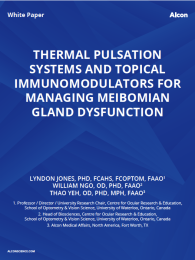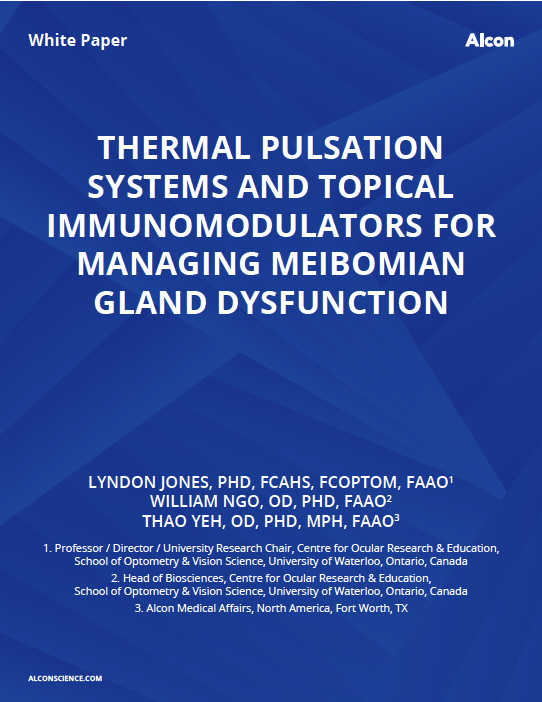

KEY MESSAGES
- Meibomian gland dysfunction (MGD) is an abnormality of the meibomian glands that results from duct obstruction and irregular meibum quality/quantity, leading to symptoms of dry eye. As MGD increases in severity, the more unstable the tear lipid layer becomes, resulting in increased tear evaporation, tear hyperosmolarity, and ocular surface inflammation
- Clinicians have many options for managing MGD but must weigh many factors in developing their treatment plan, including comorbidities, efficacy and safety, time-to-onset, adverse side effects, patient psychology (potential for compliance/dropout), and convenience
- Topical immunomodulators are indicated for and effective at reducing ocular surface inflammation. They have been shown to be effective in improving meibomian gland function within 4-12 weeks post-treatment
- The mainstay of MGD therapy is a combination of eyelid heating and expression. The iLux® device is a thermal pulsation system that offers simultaneous heating and expression therapy and has demonstrated efficacy in relieving symptoms and improving gland functionby as early as 1 week post-treatment


